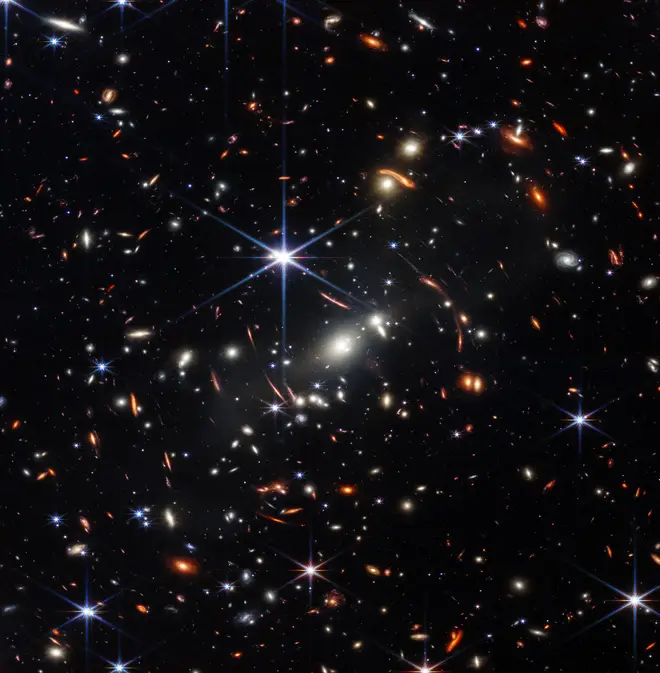
Ben Kentish 10pm - 1am
12 July 2022, 07:19 | Updated: 12 July 2022, 07:24

NASA has revealed the "deepest and sharpest infrared image" of the universe that has ever been captured.
The incredible image, captured by the James Webb Space Telescope (JWST), is the farthest humanity has ever seen in both time and distance, closer to the dawn of time and the edge of the universe.
The "deep field" image released at a White House event is filled with lots of stars, with massive galaxies in the foreground and faint and extremely distant galaxies peeking through here and there.
Part of the image is light from not too long after the Big Bang, which was 13.8 billion years ago.
US President Joe Biden was shown the image during a White House briefing.
"These images are going to remind the world that America can do big things, and remind the American people - especially our children - that there's nothing beyond our capacity," President Biden remarked.
Read more: Mo Farah reveals he was trafficked to UK under fake name as a child
Read more: 'National heatwave emergency' could be declared in UK as gritters tackle melting roads

"We can see possibilities no-one has ever seen before. We can go places no-one has ever gone before."
The $10 billion telescope has also captured four more galactic beauty shots from its initial outward gazes, which will be released on Tuesday.
The images include a view of a giant gaseous planet outside our solar system, two images of a nebula where stars are born and die in spectacular beauty and an update of a classic image of five tightly clustered galaxies that dance around each other.
The James Webb telescope is considered the successor to the highly successful, but aging, Hubble Space Telescope.
Hubble has stared as far back as 13.4 billion years.